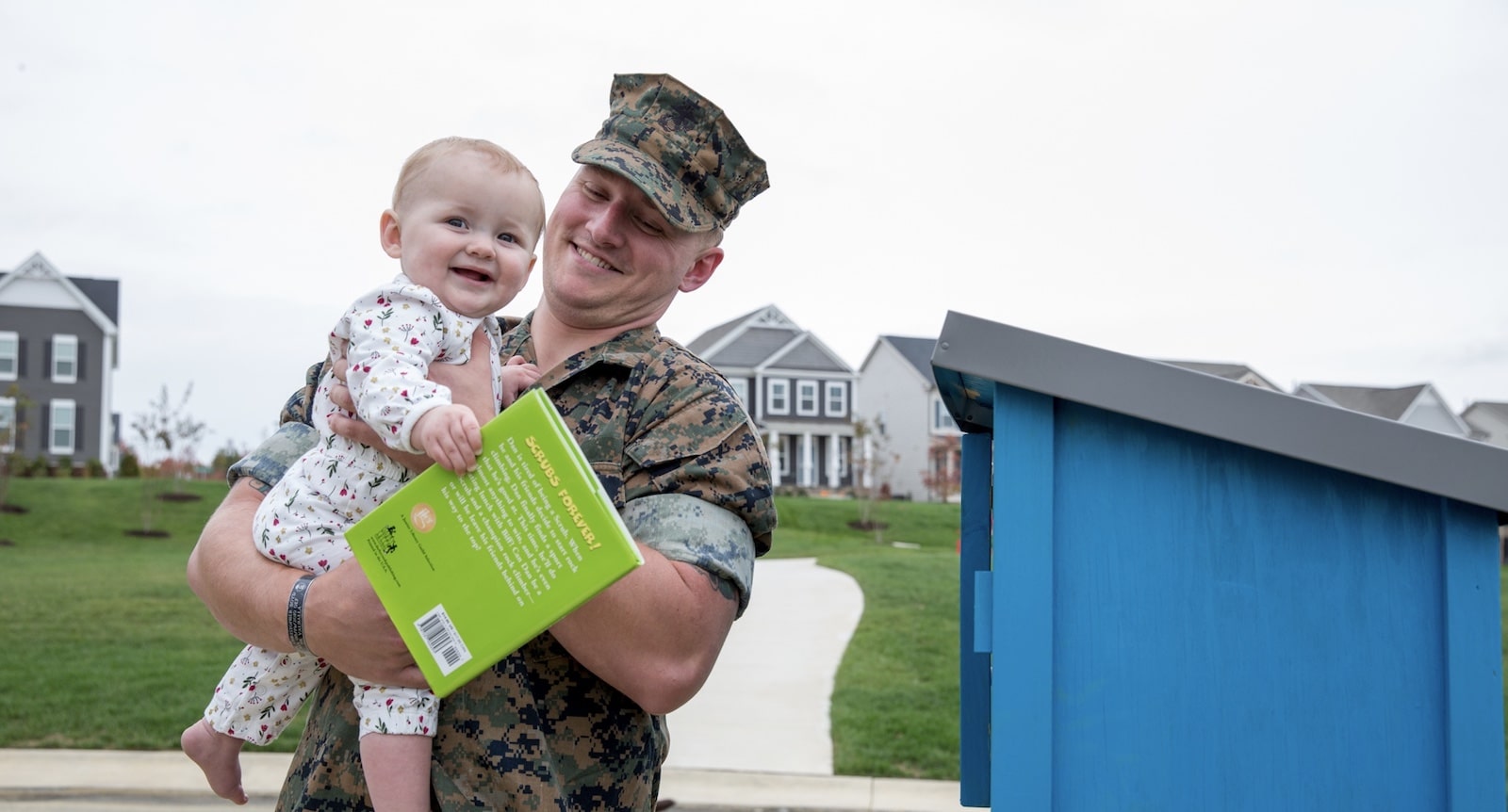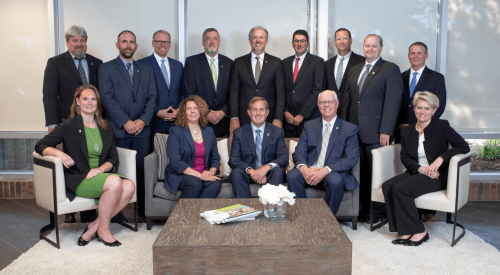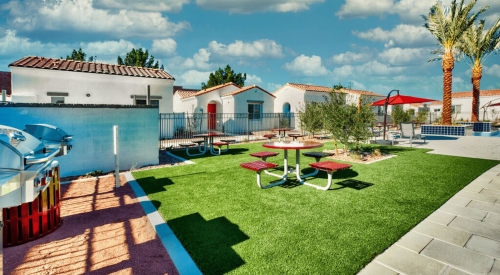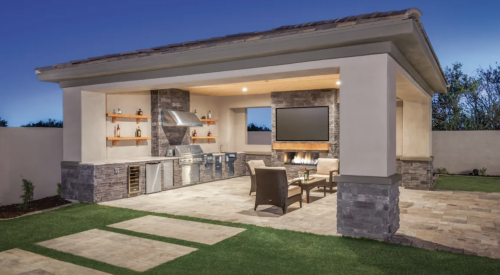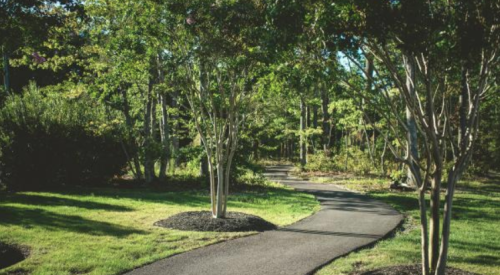Military families are found in every ZIP code across the country, and Military One Source, an online support portal for those families, reports that almost half a million move each year.
“The transient nature of the military lifestyle and the additional stressors that come with frequent moves and deployments are taxing on military families. It never gets easier to uproot your life and start over somewhere else,” said Kelcey Liverpool, executive director of Kids Rank, a nonprofit serving military youth. “That’s why finding a suitable house and neighborhood you love is vital to making a new place feel like home.”
With these families starting the search for their next duty station, here's how home builders can reach and appeal to military buyers.
RELATED
- Messaging That Matters Right Now in the Homebuying Process
- Easier Living by Design? Builders Are Exploring New Approaches
- Road Map for a Great Customer Journey
Swift and Seamless: Moving With Confidence
Active-duty service members usually receive their Permanent Change of Station (PCS) orders three to six months ahead of time and often search, buy, and move into their new home very quickly. While the peak PCS season is May to September each year, orders can arrive unexpectedly and a move may happen “off season.”
Builders can streamline the homebuying process by supplying potential military buyers with information up front and before the buyer’s first virtual or in-person visit. The sales team should encourage prospects to research the product online, schedule a virtual appointment, and then, if possible, schedule a face-to-face tour and pricing appointment.
In our experience, military families are very process-oriented and are accustomed to frequent moves, so they come prepared with their questions, wish list, and budget ready to discuss from the start. They also tend to be great at making quick decisions, being flexible and answering questions, such as, ‘What are the top five must-haves for your dream home?’ which is helpful for sales agents because it allows them to quickly narrow down the floor plan designs that would best suit the family.
An additional way to speed up the homebuying process is to encourage prospective buyers to pre-qualify for a mortgage loan. Not only will pre-qualifying help them establish a budget, but it can also contribute to a shorter mortgage approval period and will demonstrate that they are a serious buyer, which may be an advantage in a resale bidding war.
Customization Is Key for Military Homebuyers
Military homebuyers prefer new homes because of the customization options. Families are often moving across the country to a completely new state, town, and school district, so creating comfort at home is key. New builds allow buyers to personalize design and layout options, from color choices, cabinetry and flooring, to adding a study, main-floor bedroom, or loft area.
New-home owners can also enjoy peace of mind without the worry of unexpected maintenance issues that come from resale homes. With new appliances, fixtures, and a solid home warranty, family members can rest easy, which is especially important when service members deploy.
Military homebuyers prefer new homes because of the customization options. Families are often moving across the country to a completely new state, town, and school district, so creating comfort at home is key.
We’re also seeing more home builders offer technology packages. For example, Drees Homes, in Kentucky, includes energy efficiency and smart-home systems as part of its DreeSmart Innovations package, which is a big value-add to potential buyers. Features such as state-of-the-art wiring to eliminate Wi-Fi dead spots or smartphone apps to control lighting, doors, and temperature make homes even more appealing to potential buyers. Energy packages are another bonus, offering reduced monthly utility expenses.
Functional Space
Military buyers often crave more livable space, especially families that are transitioning from base housing, which is often smaller and outdated. According to the National Association of Home Builders, the average house size in the U.S. is right around 2,500 square feet, so there’s plenty of room for families to grow into.
And while square footage is important, the layout of the home is also a key consideration. While some families want extra storage or open floor plans, others care more about having an additional bedroom or updated appliances. Whatever the preference, new builds are often the best option to check most boxes on a military buyer’s wish list.
Of course, it’s not just about the interior. Outdoor space can also play an important role in a military homebuyer’s decision. In our experience, most buyers enjoy a decently sized backyard. Families with kids and/or dogs usually prefer a larger backyard with plenty of space to play outside.
RELATED
- What Do Homebuyers Want? Builders Adopt a New Strategy
- Developing the Future in Master Planned Communities
- The Reinvention of the Master Planned Community
Creating a Sense of Community for Military Families
Military families come with a set of unique needs and experiences. PCS requires several transitions in changing schools, jobs, providers, and more. Military families often gravitate to close-knit communities where they can create support networks of friends and neighbors.
Master planned communities are a great option for military families. While it can be hard to transition to a new place, choosing to call a master planned community your home base comes with many added benefits. With numerous amenities such as pools and clubhouses, to trails, parks, and gardens, and plenty of community events, master planned communities provide a range of opportunities to form friendships with residents in the neighborhood.
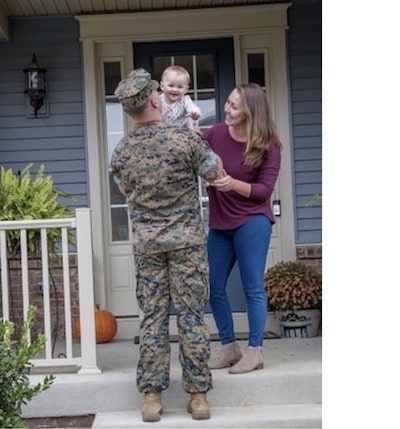 Various parts of the country, such as Northern Virginia, house several military stations, thousands of government jobs, and a variety of off-base communities that provide opportunities to connect and interact with other military families.
Various parts of the country, such as Northern Virginia, house several military stations, thousands of government jobs, and a variety of off-base communities that provide opportunities to connect and interact with other military families.
Embrey Mill, in Stafford, Va., is a great example. The community offers amenities for the whole family and some residents call it the “Disney World of Neighborhoods.” Community features include two pools, an on-site restaurant, two dog parks, 15-plus parks and playgrounds, a community garden, and 10 miles of trails. It also offers the convenience of nearby shops and restaurants. Publix, a Florida-based chain grocery store, is located on the edge of the community in a retail plaza.
“With space for kids to run around freely, neighbors who want to socialize on the weekends, and community events year-round, a master planned community offers a family away from family,” says Fred Garnes, director of marketing, Embrey Mill . A master planned community is also known to add value to the resale value of a home because of the stability the community adds, which is great for when families PCS elsewhere.
Giving Back to Those Who Serve
Home builders would be remiss not to offer incentives for military service members, both active and retired. Builders can grant discounts on closing costs, extend extra design credits, or offer incentives. Bonuses go a long way with prospects and show commitment to helping those who serve.
Most builders work with preferred lenders who they trust to provide great service to prospective buyers. It goes without saying, but lenders should be reputable, trustworthy, and informative. Veteran’s Administration loans can be difficult to get and vary state by state, so builders should partner with lenders that understand the nuances and can apply Basic Allowance for Housing toward a mortgage loan sought by a military family.
 Brian McGinniss is the sales manager for Drees Homes’ Washington, D.C., division.
Brian McGinniss is the sales manager for Drees Homes’ Washington, D.C., division.
Andrea Hidalgo is VP of sales-Mid-Atlantic for Richmond American Homes.
